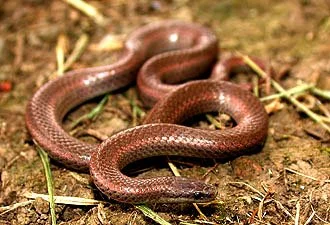
Create a Wildlife Pond
Adding a water feature to your yard will greatly increase wildlife habitat. Here are a few suggestions to help out with your project.
The size, or diameter, of your pond is up to you! Pick something that suits your property, and that you know you can maintain and enjoy.
Wildlife will be attracted to the smallest puddle, so any size pond will “work”. Water will remain cooler in summer in a larger pond.
Size
By creating varied depth within the pond, you can maximize the wildlife habitat potential. The pond doesn’t need to be any deeper that 0.5 metres, but a deeper section in the middle can help keep water cooler, and create fish habitat if you wish to add fish. Having shallow areas at the edges will allow non-aquatic birds to bathe. By creating shelves to vary the depth, you also create ledges for placing potted aquatic or marginal plants on. Preformed pond liners often have these shelves. Flexible pond liner can be molded around ledges and held in place with stones.
Depth
Vegetation in and around your pond is essential for maintaining a healthy environment for the wildlife you attract. Try to achieve 60-75% vegetation cover of the surface of the water to keep the water cool, and the algae under control.
By planting a few woody shrubs around the pond, birds will have perches nearby. Having logs and stones around the edge of the pond allows for reptiles like turtles to warm up in the sun. Amphibians enjoy shallow edges of a pond and lots of vegetation coverage to hide from predators.
Plants that go into a pond are generally placed into three categories: floating, marginal and submerged. Take a look at some of our favourites in the drop down menu’s below.
Planting
A stagnant pond is not always the nicest thing to look at. Ensuring water flow can help the health of your pond substantially. Circulating the water will also prevent mosquitoes from breeding.
Similarly, creating a trickling sound by installing a pump can attract wildlife.
Water Movement
Native Plant Suggestions
-
Grow on a ledge near pond’s edge; roots submerged, stems/leaves above water.
Examples:
-Common Cattail (Typha latifolia)
-Wapato (Sagittaria latifolia)
-Water Plantain Buttercup (Ranunculus alismifolius)
-Marsh cinquefoil (Comarum palustre)
-
Grow in deeper parts of pond; roots and stems submerged, leaves float.
-Water Smartweed (Polygonum amphibium)
-Water lily (Nuphar polysepalum)
-Water shield (Brasenia schreberi)
-
Free floating, roots not in soil
-Duckweed (Lemna minor)
-
Plants that will grow well around ponds
-Red osier dogwood (Cornus stolonifera)
-Blue elderberry (ambucus racemosa)
-Willow (Salix spp.)
-Thimbleberry (Rubus parviflorus)
-Ocean spray (Holodiscus discolor)
-Salmonberry (Rubus spectabalis)
-Pacific ninebark (Physocarpus capitatus)
-Hardhack (Spirea douglasii)

Common cattail (Typha latifolia)

Hardhack (Spiraea douglasii)

Water lily (Nuphar polysepalum)

Water Smartweed (Polygonum amphibium)

Scoulers Willow (Salix scouleriana)
Wetland Stewardship Guide
-
Learn more about wetlands, ponds, and water loving species in HAT’s Wetland Stewardship Guide.

Learn more about wildlife










